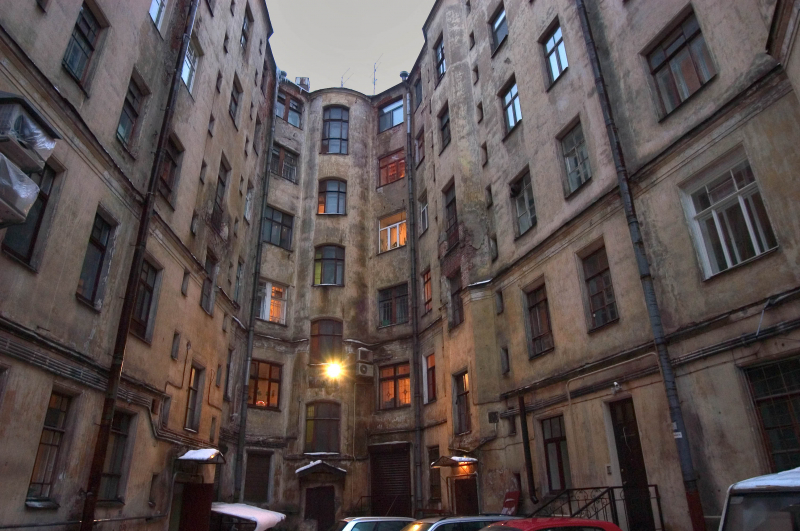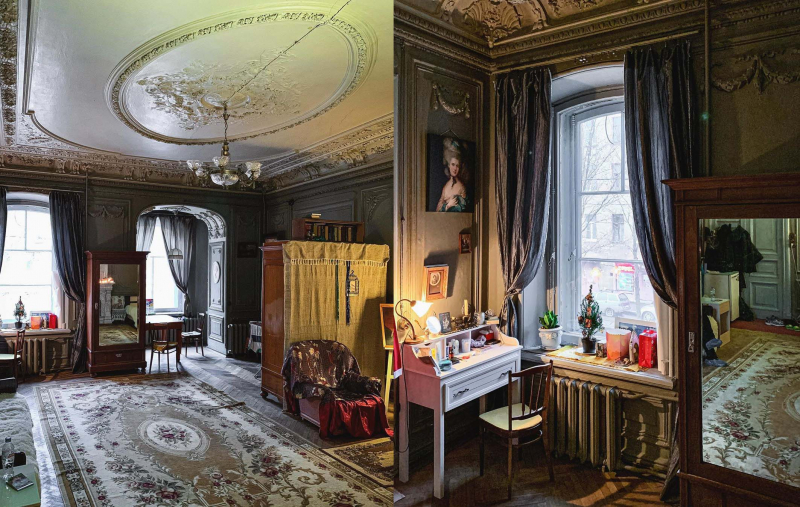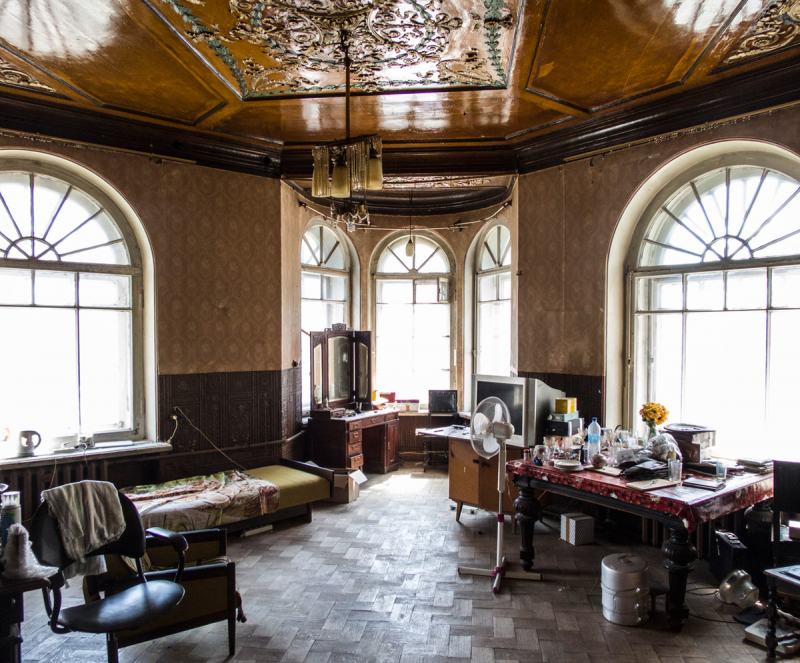St. Petersburg Communal Apartments: Unique and Endangered
St. Petersburg, a city of five million residents, still has a large number of communal apartments or kommunalki, as they’re called in Russian — about 70,000 in total — most of them in the historic center of the city. With their high ceilings, large windows looking out onto the city's busy streets and picturesque scenery (if you are lucky enough), long centered corridors, and shabby parquet floor, communal apartments retain an air of gracious living, a throwback to the city’s pre-revolutionary past.

On any other day, I would have passed by this crumbling building without a glance. However, once I happened to get inside this one building (thanks to my dear friend who is a photographer and knows a lot of people) that had little remarkable architecture but a rich history. It was a bit like falling down a rabbit hole. A heavy metal door opened onto a brand new world. I could scarcely believe my eyes — here luxury met poverty — a carved arch in the hallway of the grand but yet сrammed apartment (soon to be deserted), French-inspired stucco moldings on the cracked ceiling, a marble fireplace, dirty stained-glass windows and an old broken stove. And all of that was about to vanish in the near future?

It was a piece of living history that we still had left. Such places are like time capsules full of olden day memories that can take you back in time and history. It got me thinking about the people, who might have lived there and what they might be like, changes that have happened there over the years, and — most importantly — about the fact that everything has its own history, we sometimes know surprisingly little about.
Once a unique Soviet phenomena, which appeared in the years following the 1917 Revolution, now in our kinetic and fast-paced world communal apartments are slowly disappearing. They were meant to save space by accommodating several families in a single space, sometimes in revenue houses or even aristocratic mansions. Today, some buildings are of no significant value (that's how we usually picture communal apartments to ourselves) and about to be gone, while others are in sore need of repairs and renovation, and could be gone soon, too.

Being able to live amongst the decaying grandeur of a past civilization or be able to see it in real life has an insidious charm that seduces locals and visitors alike. I came across this one interesting project by Maxim Kosmin, who started seeking out and exploring communal apartments after seeing photographs of them on estate agents' websites. Now, he has an Instagram account (@maax_sf) with over 239,000 followers dedicated to communal apartments and also gives tours. Kosmin’s images take us into these private spaces, giving us glimpses of residents' life there, followed by the captions with stories about their families' experiences living in the apartments. Thanks to him, the situation in communal apartments is once again under the spotlight.
Therefore, it is especially sad that we may one day lose it all due to different reasons. They just need something (or someone) to bring them back to life. Such places are still being lived in communally or stand still, till one day, hopefully, they will get a chance to have a new life as single apartments, cafes, hostels, etc. — still awakening reminiscence of original elegance and past glories with their unique interior and decor.
